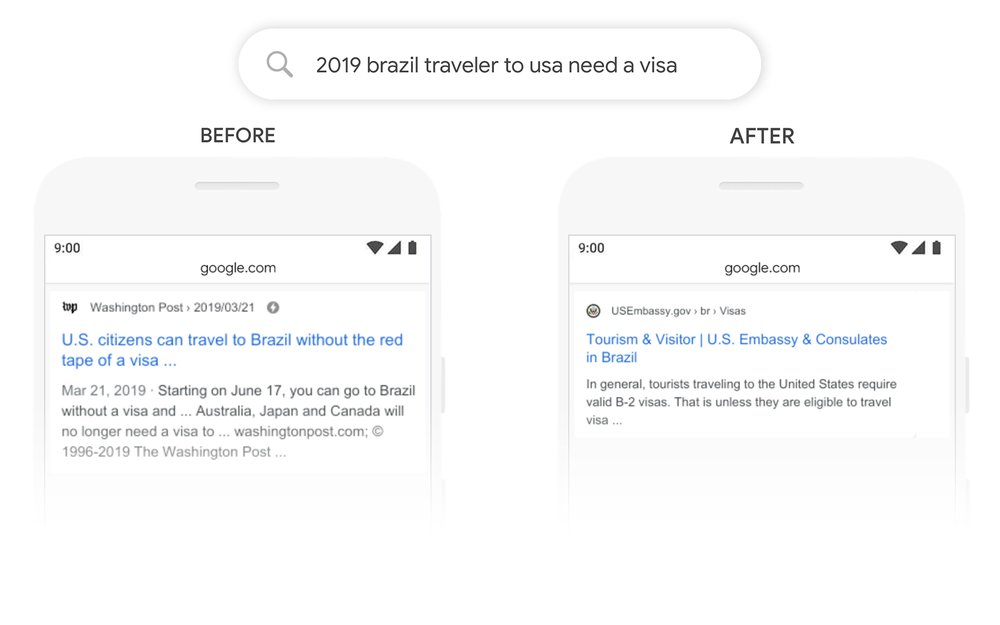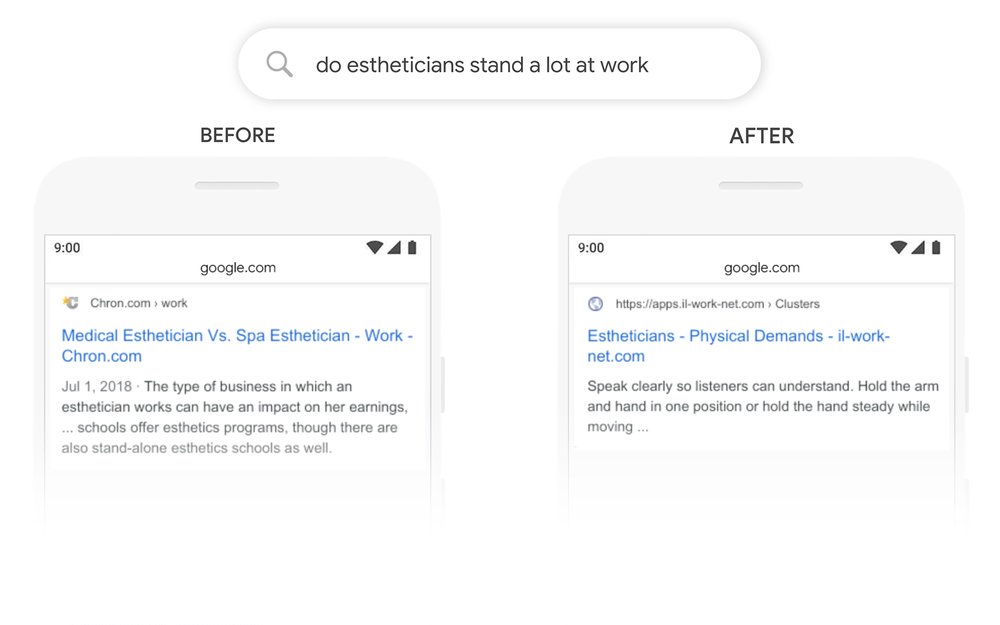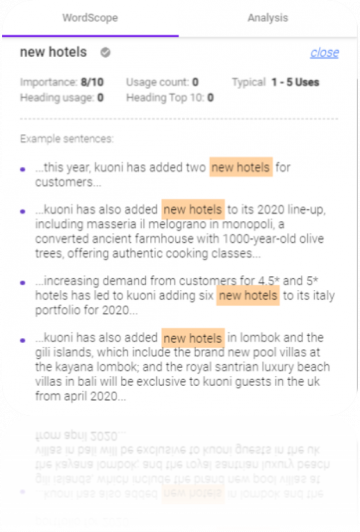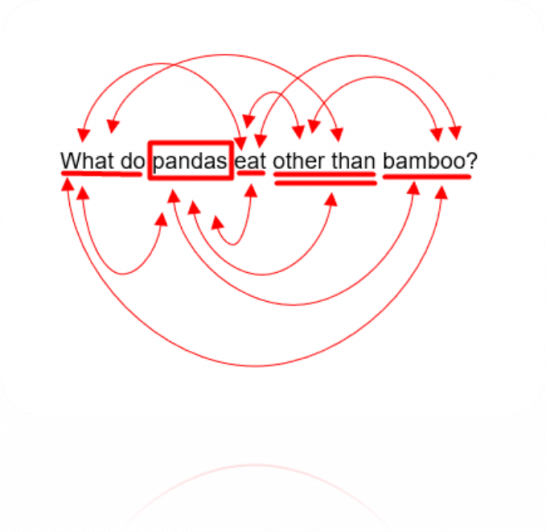Google BERT algorithm update is big enough that it impacts around 10% of search queries. It changes how Google provides better, relevant results for users by understanding the search queries better.
If there’s something to be learned from Google search, people’s curiosity is endless.
Every day, 15% of searches are entirely new.
Now, there’s a new Google algorithm update to keep up with these unique searches and help bring relevant results for search queries they couldn’t anticipate; Google BERT.

Google BERT was announced and rolled out back in October 2019.
It would significantly affect organic rankings and featured snippets.
Therefore, as content creators, you could probably benefit from learning and adjusting to this algorithm update.
But first, what is Google BERT?
What is Google BERT?
Bert, Google’s latest algorithm, impacts around 10% of search queries.
That may seem like a small percentage.
However, it may have a significant impact on your SERP, search engine results page rankings.
It isn’t a small change either.
BERT’s algorithm update is the most significant change since RankBrain.
Google BERT is an open-source neural network-based technique that’s meant for NLP, natural language processing, pre-training.
BERT is an acronym for Bi-directional Encoder Representations from Transformers, a technology intended to train state-of-the-art question answering systems.
The algorithm would be applied to the English language and would later be implemented in other languages.
However, the question is how will this new algorithm affect your organic rankings and featured snippet searches?
How does Google BERT work?
Google BERT works by connecting the words used before and after a keyword in a search query to get better context.
Doing this helps the algorithm understand the search query and provide relevant results for the user.
For instance, a search for “2019 brazil traveler to the USA need a visa.”
In this search query, the word “to” and its relationship to the other words is essential to understanding the whole search query’s meaning.
The phrase is about a Brazilian’s inquisition about traveling to the USA.

Previous algorithms weren’t able to find the connection, which led the algorithm to return results related to US citizens traveling to Brazil.
Google BERT can connect the terms in the search query and return results relevant to the search query: Brazilians traveling to the US.
Looking at another query, “do estheticians stand a lot at work?”
Previously, Google’s systems used to match keywords by matching the terms stand-alone in place of the word stand.
Unfortunately, that wasn’t the best use of the t stand in that context.

Google BERT understands the context of the word “stand” and relates it to a job’s physical demands.
This helps the algorithm display relevant results.
Simply put, Google’s algorithms are becoming smarter.
To get ahead of your competition, you’ll have to evolve your content at the same rate.
It would help if you created your content to make it feel as natural as possible, and there are various ways you could do this.
You’ll have to use the best and most relevant keywords for your content.
You’ll also have to use long-tail keywords to make your content more specific and provide Google’s algorithm with the right fodder to understand your content and offer it to the most relevant users.
You’ll also need to create relevant content, high-quality content that solves the user’s problem effectively.
And to do this, you’ll need an SEO tool.
BiQ’s tools help you create relevant content for your posts.
However, the question you are most probably asking is how do you go about doing this?
Well, don’t worry.
Read on and find ways to optimize your content to get better rankings for your SERPs and a better-targeted audience.
Optimizing for Google BERT
You can optimize for Google BERT by establishing a relationship between two parts of a query, a method known as Entity SEO.
Long story short, Google searches for content that can answer the basic questions, who, what, when, where, why, and how.
You’ll need to make your content as relevant as possible and establish a clear connection between search intent and your website’s content.
The more effort you invest into covering your niche sufficiently, the more authority and relevance your website gathers.
Alright, let’s get on with it.
The first step is to optimize your content for search intent.
Search Intent

Users search type their queries on Google, expecting three different results.
These are informational, navigational, or transactional.
The best way to rank higher and get relevant audiences for your content is to optimize your keywords to your intended audience and their precise search intent.
To do that, you’ll need to create content tailored to providing your audience with results that answer one of those three expectations.
By doing this, you’ll not only rank higher, but you’ll increase your user experience, which will, in turn, boost your rankings even higher.
For instance, if your site is informational, you’ll need to write your content so that it provides your users with relevant information.
Users who search for informative content, more often than not, are in the awareness stage. Therefore, you’ll need to create content with more informational intent.
Creating content meant to provide navigational or transactional information will drive the wrong type of traffic to your website, which will ultimately lower your SERP rankings.
Using the right keywords that target the user’s keyword intent could help Google BERT understand your user’s search queries and send the most relevant traffic your way.
This will inevitably help you become an authority in your niche and boost your SERP rankings.
The best way you could identify keyword intent is by using BiQ’s Keyword Intelligence, specifically the section about the keyword’s intent.
Keywords intent is one of the various analytical data provided by BiQ’s Keyword Intelligence to help you determine the best keywords to use to target the most relevant audience.
For instance, let’s say that you want to know what the searcher intended to use the keywords, “best shoes.”
What you’ve got to do is key in the keyword to our keyword research tool to estimate keyword percentages based on the total number of related keywords.

Quality of Content
The Google BERT update intends to provide good quality and relevant content for its users.
Therefore, if you want to increase your SERP rankings and attract more traffic from your target audience, creating this content needs to become your priority.
You could use BiQ’s Content Intelligence to create specific content that’s relevant for your audience.
BiQ’s Content Intelligence will provide you with the best content-driven strategies that are SEO-friendly.
For instance, if you are using block editor, you’ll also get interactive writing tips to guide you along.
BiQ’s Content Intelligence also shows you your content grade, how relevant your keyword is, and a count that assesses whether you have the optimum keyword density.
You could also use BiQ’s Content Intelligence feature to understand what essential to cover about your topic!
How do you do this?
Let’s assume that you already have a great keyword and plan to create content for your post.
The content will have to be creative, relevant, and informative.
The most logical thing that most people do is go on Google, type in the keyword and open various tabs containing the keyword.
However, this strategy’s problem is that it takes too long and human observation is prone to error.
You could use BiQ’s tools to analyze your content and compare it with top-performing content in your niche.
Better yet, BiQ can break down your keyword in terms of usage, similar keywords, and sample sentences that you could use as guides for creating relevant content.

For example, if you are writing about the best holiday destinations, you could run a Wordscope analysis and find similar keywords and sample sentences that could help guide you along.
You can’t possibly hope to satisfy users without writing about similar keywords.
All these features help create the best quality content for your audience.
Keyword Density
Keyword density, also known as keyword frequency, refers to the number of times a keyword appears in a piece of content as a percentage of the overall word count.

Earlier on, keyword density used to be how people boosted their website rankings; however, things changed eventually.
Content creators had developed strategies that focused on keyword placement.
But significant improvements in Google’s algorithms rendered this strategy almost impractical.
Today keyword stuffing can bring you nothing but problems and lowered rankings.
If you want to get a higher organic ranking, you have to think like a machine.
You’ll have to put yourself in the shoes of Google’s algorithm and think as it thinks.
Google’s algorithms, especially Google BERT, have a neural network-based algorithm with natural machine learning natural language processing.
This means that the algorithm can make connections that other pioneer algorithms thought to be random.
Google BERT can get the nuance and make these minute connections that mean the difference between relevant and irrelevant results.

The improvement in algorithms means that Google can easily understand user’s search queries.
Consequently, if you want to improve your rankings and get more traffic, you’ll have to help Google understand your content and its relevance to your target audience.
The best way to do this is by using related keywords.
Related keywords are terms or phrases whose semantic meaning is closely tied to the main keyword.
They can be used interchangeably by users while making queries in search engines.
Since Google’s algorithms understand language and, thanks to BERT algorithm update, they can make semantic connections.
It would pay to include related keywords in your content if you want to rank higher.
Don’t be too worried about keyword density.
Sprinkle a few related keywords here and there and help Google understand your content and its relevancy to your target audience, and you’ll rank higher.
Long-tail Keywords
Since Google can understand your page’s context, it would be best to stop at related keywords.
You could take an extra step by adding relevant long-tail keywords to your content.
Long-tail keywords are longer, more specific versions of commonly used keywords.
They do get less traffic; however, they can lead to higher conversions when used appropriately in your content because of their specificity.
You can use BiQ Keyword Intelligence to get relevant keywords for your content.
Type in your preferred keyword, and you will get results for related short and long-tail keywords that you can use for your content.
For example, if you are looking for long-tail keywords on best holiday destinations, you could enter “best holiday destinations” and get analytical results.
You can use the data to find the most relevant, high-value keywords you could use in your content.

You can then sort them out by filtering for only long-tail keywords and choose the level of relatedness that’s most appropriate.
You could then go ahead and select the kind of keywords you need based on keyword value.
High valued keywords mean that the keyword is more likely to bring in more traffic at a low competition.
Conclusion
Google is continuously rolling out algorithms better placed to understanding search queries.
These algorithms help users communicate more effortlessly with search engines and get the most appropriate responses.
If you want to rank higher and provide more relevant results, you’ll need to keep track of these algorithms and understand how they affect your rankings.
Studying them will help you understand how Google algorithms like Google BERT works and what best content optimization techniques you’ll need to use to rank higher.
You’ve also got to know that you’ll have to provide high quality, relevant, and helpful content that your users find useful to rank higher.
Having the best SEO tools could not hurt either. Finding and using keywords doesn’t cut it anymore.
To stay ahead of your competition, you’ll have to find the most appropriate tools with minimal competition, and that’s what BiQ is all about.
Have fun creating your content.
And remember, I’d love to hear back from you.
Cheers!




